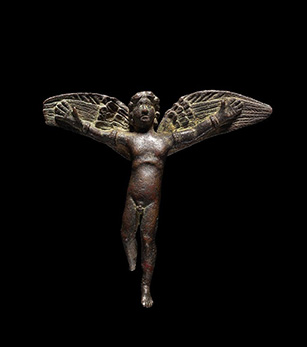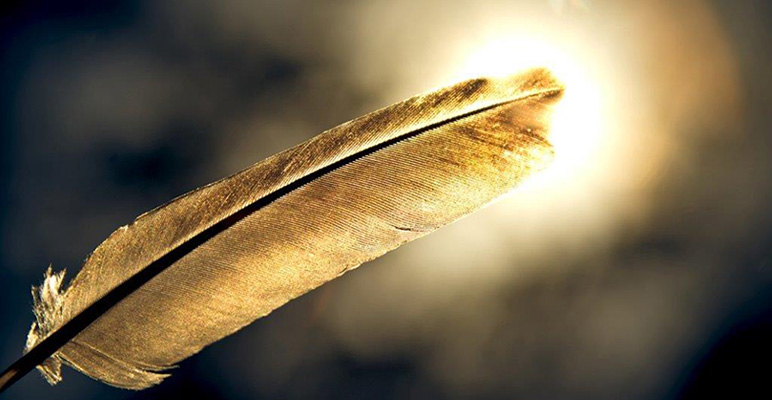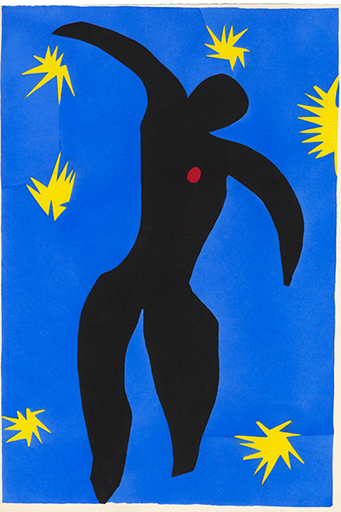2 Icarus as symbol and signifier
The myth of Daedalus and Icarus, the father and son who escaped from the island of Crete on wings, is told in Book 8 of Ovid’s Metamorphoses. Icarus has become the more familiar of the two characters as the ancient high-flyer who fell from the sky when the wax that secured his wings was melted by the sun.
Icarus’ story connects up with a number of narrative passageways centred on the island of Crete (where Daedalus, the legendary artificer and craftsman, constructed a maze, the Labyrinth, to conceal and control the Minotaur). Daedalus was himself effectively imprisoned on the island (the king barred his exit by sea) and so was unable to return with his son, Icarus, to Athens or find sanctuary away from the harsh regime at Crete.
The Cretan labyrinth also featured in the exploits of the Athenian hero, Theseus, who slew the Minotaur, the half-man, half-bull offspring of queen Pasiphaë, with the help of Ariadne, daughter of King Minos. Another connected myth is that of the Cretan princess Phaedra, who later married Theseus (even though he had abandoned her sister, Ariadne, his guide through the Labyrinth), and developed a destructive and tragic passion for her stepson Hippolytus. These strange sexual couplings (or attempts at them – Phaedra is scorned and takes her revenge) stem from a curse on the descendants of the sun god, Helios. Aphrodite punished Helios for his exposure of her affair with Ares by decreeing that the female descendants of the sun would select and pursue inappropriate and disastrous partners.
Activity 1
Think about any medium (from art, literature, film, television, or even perhaps a scientific article) in which you may have encountered Icarus. It might be the briefest of allusions or simply the use of his name to conjure up the miracle of ‘man’ or a man in flight. In what way is his myth used? The painting by Matisse reproduced on this webpage is one striking example. You could also look up ‘Icarus’ using an online search engine.
Discussion

As both character and image, Icarus continues to turn up in unexpected places, from scientific papers to advertising. Icarus has become a symbol for heroic daring (the crew of space shuttles that did not survive) but his flying and falling have been given a psychological timbre as well as a physical expression in all kinds of literature from poems to thrillers. Icarus also regularly represents the alienation of the artist and the consequences of breaking out of boundaries, both cultural and social. If you typed ‘Icarus’ into an internet search engine, this no doubt yielded a fascinating but random range of Icarus-related themes with plenty of examples from popular culture as well as more traditional ‘high’ arts. For example, popular contemporary music boasts a long list of Icarus references, from Joni Mitchell’s lyrics about airwoman Amelia Earhart (‘Amelia’, 1976), to Queen’s song, ‘No One But You (Only the Good Die Young)’ (1997). Another song from 2003 by the band Thrice focuses on Daedalus’ perspective on the tragedy with a track entitled ‘The Melting Point of Wax’. Some of these new versions use the classical myth to communicate the universality of human emotions and suffering; at the same time, they often update the details for a new contemporary audience. For instance, Matisse’s painting Icarus is widely seen as an evocative image of twentieth-century warfare: the single red dot in the figure’s chest has been interpreted as ‘a modern pilot who has been shot down, and falls through a sky illuminated with flashes of gunfire’ (Kemp, 2002, p. 417).

